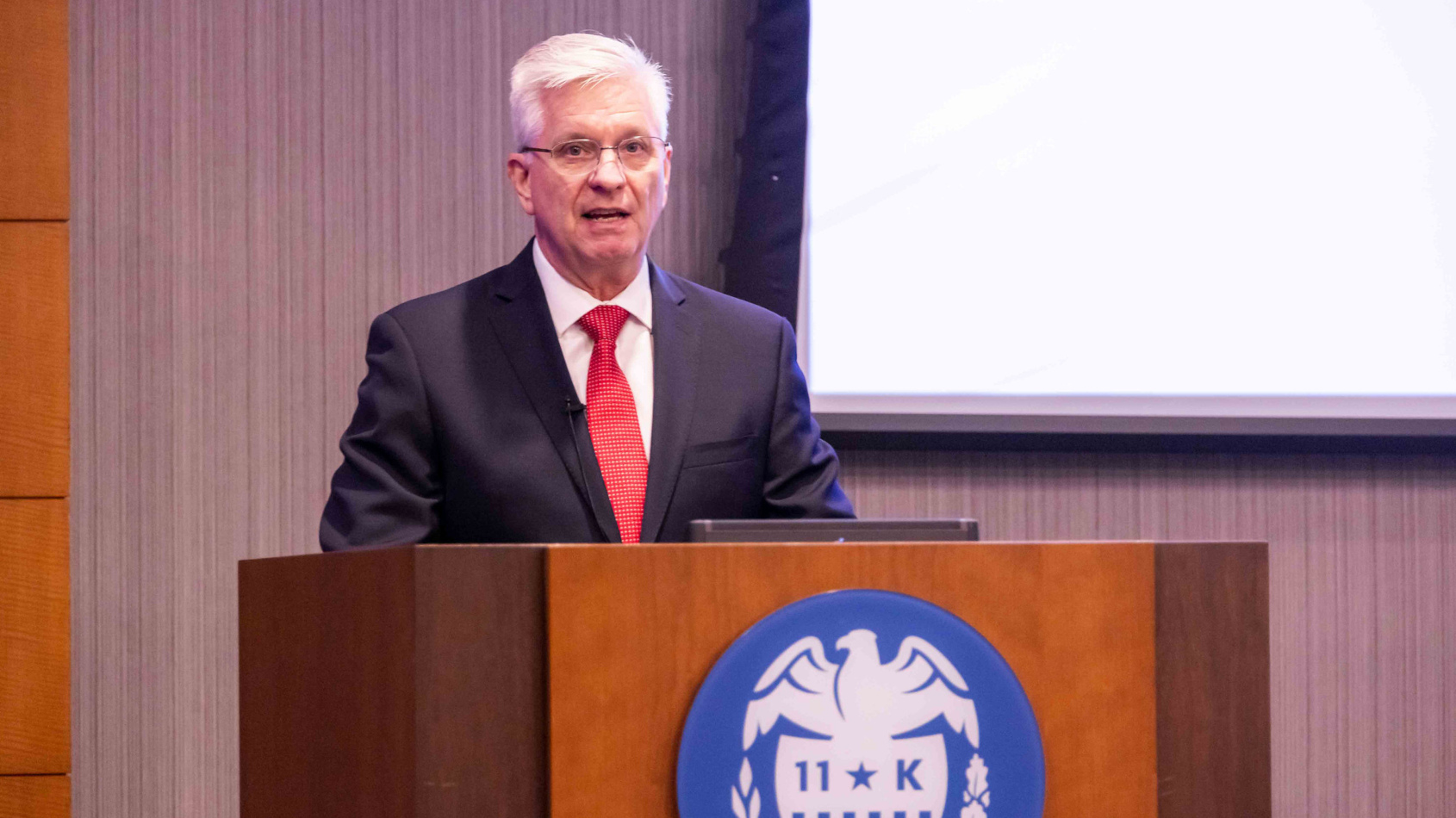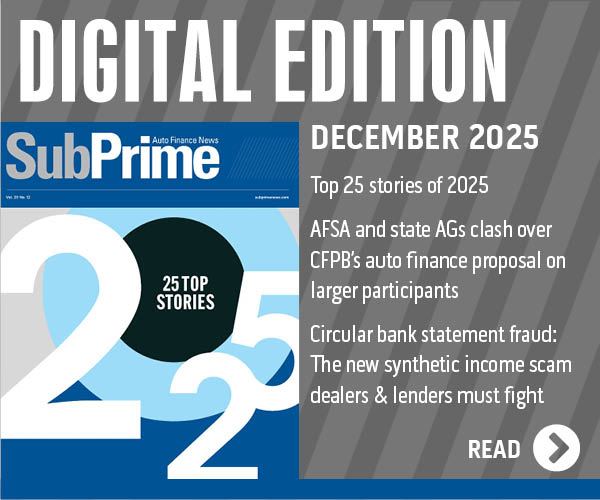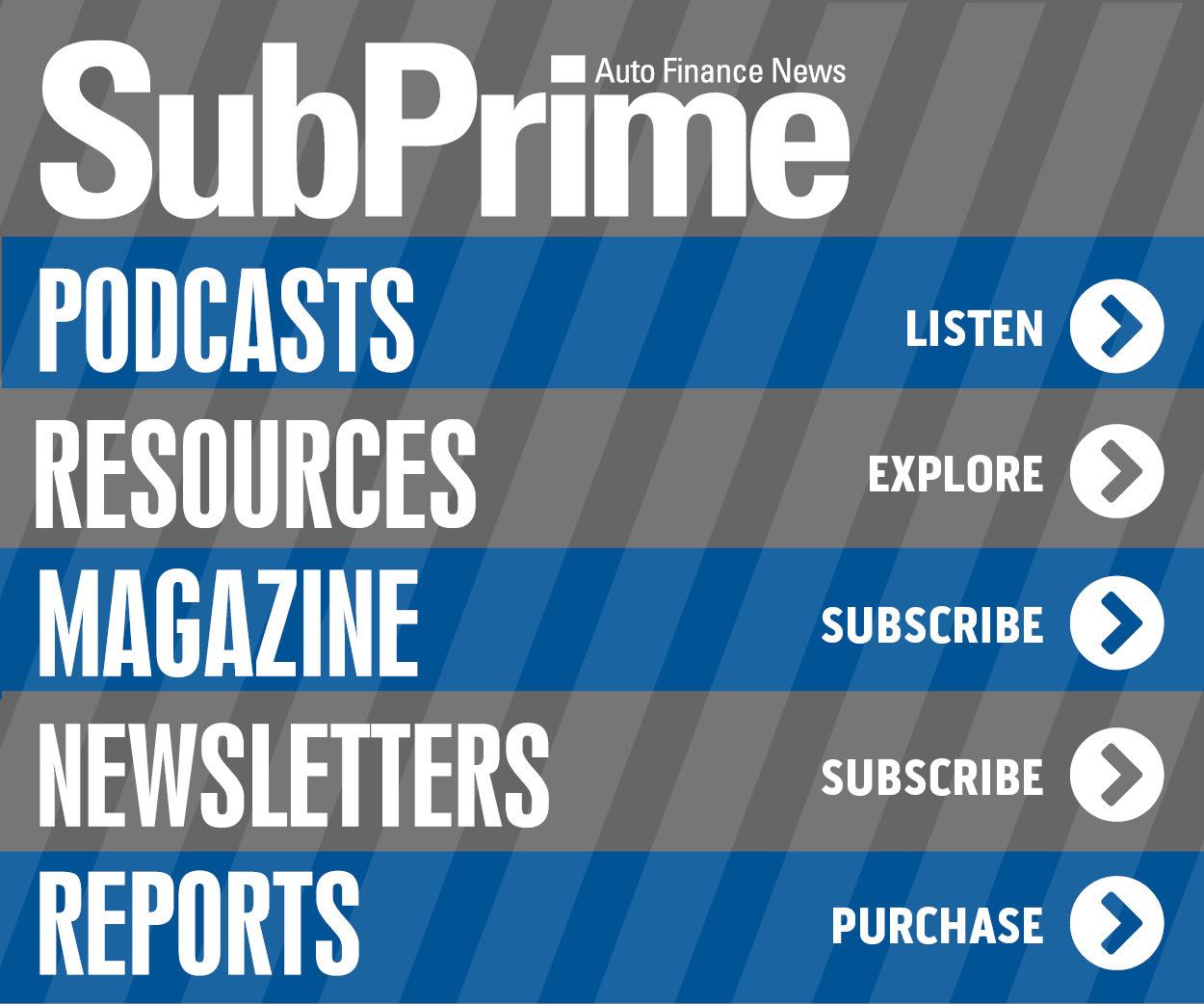Car-purchasing plans rise in August amid Fed turmoil & slightly sagging consumer confidence

Federal Reserve Governor Christopher Waller is pictured on July 10 at the Federal Reserve Bank of Dallas. Image courtesy of the Fed.
By subscribing, you agree to receive communications from Auto Remarketing and our partners in accordance with our Privacy Policy. We may share your information with select partners and sponsors who may contact you about their products and services. You may unsubscribe at any time.
With turmoil at the Federal Reserve getting as intense as ever, perhaps dealerships and finance companies can focus on one part of the newest Consumer Confidence Index from the Conference Board.
While the overall reading and other parts of the monthly analysis ticked lower, the Conference Board said purchasing plans for cars increased in August, with buying intentions for both used and new vehicles rising. That finding came even though the Consumer Confidence Index fell by 1.3 points in August to 97.4. That’s down from the July reading of 98.7, which was revised up by 1.5 points.
The Present Situation Index — based on consumers’ assessment of current business and labor market conditions — fell by 1.6 points to 131.2.
The Expectations Index — based on consumers’ short-term outlook for income, business, and labor market conditions — decreased by 1.2 points to 74.8.
Expectations remained below the threshold of 80 that typically signals a recession ahead.
The cutoff date for preliminary results was Aug. 20.
Subscribe to Auto Remarketing to stay informed and stay ahead.
By subscribing, you agree to receive communications from Auto Remarketing and our partners in accordance with our Privacy Policy. We may share your information with select partners and sponsors who may contact you about their products and services. You may unsubscribe at any time.
“Consumer confidence dipped slightly in August but remained at a level similar to those of the past three months,” said Stephanie Guichard, Senior Economist at the Conference Board. “The present situation and the expectation components both weakened.
“Notably, consumers’ appraisal of current job availability declined for the eighth consecutive month, but stronger views of current business conditions mitigated the retreat in the Present Situation Index,” Guichard continued in a news release. “Meanwhile, pessimism about future job availability inched up and optimism about future income faded slightly. However, these were partly offset by stronger expectations for future business conditions.”
Among demographic groups, the Conference Board noticed confidence fell for consumers under 35 years old, was stable for consumers aged 35 to 55, and rose for consumers over 55.
Researchers mentioned the evolution of confidence by income groups was mixed, with no clear pattern emerging. By partisan affiliation, confidence weakened in August among both Republicans and Democrats but was little changed for Independents.
“Consumers’ write-in responses showed that references to tariffs increased somewhat and continued to be associated with concerns about higher prices,” Guichard said. “Meanwhile, references to high prices and inflation, including food and groceries, rose again in August.
“Consumers’ average 12-month inflation expectations picked up after three consecutive months of easing and reached 6.2% in August — up from 5.7% in July but still below the April peak of 7.0%,” Guichard added.
And speaking of tariffs, that was one of the topics highlighted by Federal Reserve governor Christopher Waller, who continued to make public speeches last week. This time, he appeared at the Economic Club of Miami.
“Many forecasters have said they expect household and business spending and investment decisions will be weighed down by tariffs — those enacted, and the uncertainty about tariff levels in the future,” Waller told attendees at the South Florida event. “Tariffs affect the costs and profits of businesses and, to the degree that they raise prices, also affect the real disposable income of consumers. Some businesses will be directly affected by tariffs, but many more will be affected by how tariffs crimp household spending. Tariff effects on households and businesses also will weigh on employment.
“All of this is consistent with what my business contacts are telling me, which is that they are postponing investment and hiring because of the uncertainty about how tariffs will affect their input costs and demand for their products. That said, I’m starting to hear some rumblings that businesses cannot sit on the sidelines forever. So, we could see, at least, investment projects that were postponed begin to pick up, which would be positive for the economy. But how employment decisions evolve is more up in the air. I will be monitoring these business decisions because they are key to how activity will unfold in the second half of the year,” Waller continued.
And speaking of the Fed, it’s been anything but a boring scene involving policymakers in recent weeks. Comerica Bank chief economist Bill Adams and senior economist Waran Bhahirethan recapped the situation on Monday. That’s a week after they highlighted their next rate forecast has the Federal Open Market Committee (FOMC) cutting the funds target a quarter percent both this month and December.
“The campaign to pressure the Fed to cut rates intensified last week as President Trump attempted to fire Governor Lisa Cook; Governor Cook is filing suit to contest her firing, which the president asserts is for cause,” Adams and Bhahirethan said in an analysis.
“The administration criticized chair (Jerome) Powell for the cost of the Fed’s renovations in July; former governor Adriana Kugler took personal days during the Fed’s July meeting and did not take a side in the split vote between advocates of a cut and FOMC members who thought rates should hold steady, then resigned a few months before her term was scheduled to end. Financial markets are largely shrugging off the attacks on the Fed’s independence, apparently betting the episode is Greenland redux,” Adams and Bhahirethan added.
Turning back to the research from the Conference Board, consumers’ outlook on stock prices deteriorated slightly in August, with 47.4% of consumers expecting stock prices to increase over the next 12 months, down from 48.9% in July. Conversely, 30.3% of consumers expected stock prices to decrease over the next 12 months, up from 28.1% in July.
The share of consumers expecting interest rates to rise increased to 54.0% from 53.1% in July and fewer consumers expected interest rates to fall (20.9% versus 21.4% in July).
The Conference Board went on to mention consumers’ views of their Family’s Current and Future Financial Situation both improved in August. The share of consumers expecting a recession over the next 12 months rose in August to the highest level since the April peak.
Researchers pointed out these measures are not included in calculating the Consumer Confidence Index.
In Miami, Waller again called for policymakers to trim interest rates when they gather on Sept. 17.
“While I judge that the FOMC should have begun this process in July, based on the data in hand, I don’t believe that a cut of larger than 25 basis points is needed in September. That view, of course, could change if the employment report for August, due out a week from tomorrow, points to a substantially weakening economy and inflation remains well contained,” Waller said.
“I think there is a growing consensus that monetary policy needs to be more accommodative, and even some recognition that it would have been wise to begin this process in July,” he continued. “I don’t believe that policy has fallen substantially behind the curve, but one way to signal that I don’t intend to allow that happen is to talk about where we go after September. Like other participants, I will be updating my economic projections just before the next FOMC meeting, including my assessment of the appropriate level of the federal funds rate at the end of this year and next.
“The totality of the data and the outlook will determine how quickly I believe we need to move policy to a neutral setting, but as I stand here today, I anticipate additional cuts over the next three to six months, and the pace of rate cuts will be driven by the incoming data,” Waller went on to say.


